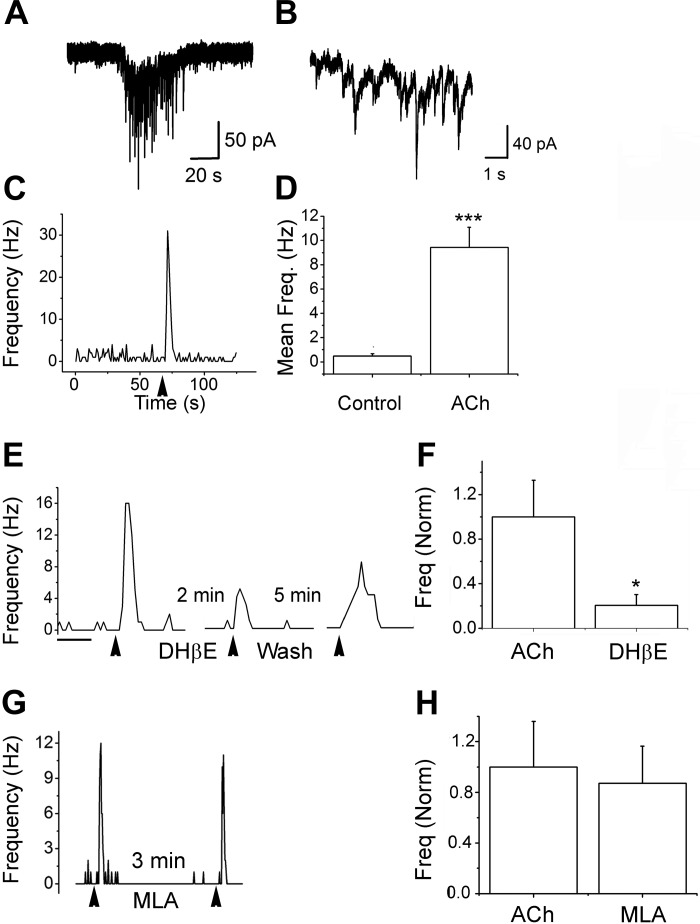Fig. 6.
α4β2*-nAChRs increase miniature inhibitory postsynaptic current (mIPSC) frequencies on ET cells. mIPSCs were examined under voltage-clamp in the presence of 1 μM tetrodotoxin, 10 μM DNQX, and 50 μM D-AP5 to block action potentials and ionotropic GluRs. The internal solution was based on CsCl to give a chloride equilibrium potential of 0.85 mV (Ghatpande et al. 2006). Thus mIPSCs are inward. All events were abolished by the addition of 10 μM gabazine. A: application of 1 mM ACh/At for 3 s resulted in an inward nAChR current with a barrage of mIPSCs superimposed on it. B: expanded segment of the trace in A. C: frequency plot for the cell shown in A. Application of ACh/At results in a burst of mIPSCs with a peak frequency ∼30-fold that of the baseline. D: cumulative data for mean frequency change from 17 cells. nAChR activation caused a 20-fold increase in mIPSC frequencies (***P < 0.0001). E: frequency plot for the nAChR effect. Three applications of ACh/At (3 s/application) were performed at the arrowheads. After the first application, 10 μM DHβE were applied via a puffer pipette for 2 min. The second nAChR response in the presence of the antagonist was attenuated. A third agonist application was carried out in this cell after a 5-min washout of the antagonist and shows a partial recovery. F: cumulative data from 5 cells. DHβE blocked the mIPSC frequency increases by 80 ± 9% (*P = 0.03). G: two agonist applications before and after a 3-min application of 10 nM MLA. The two responses were not different from each other. H: cumulative data from 7 cells. mIPSC frequencies in the presence of MLA were 87 ± 29% of the responses with ACh/At alone (P = 0.2).

